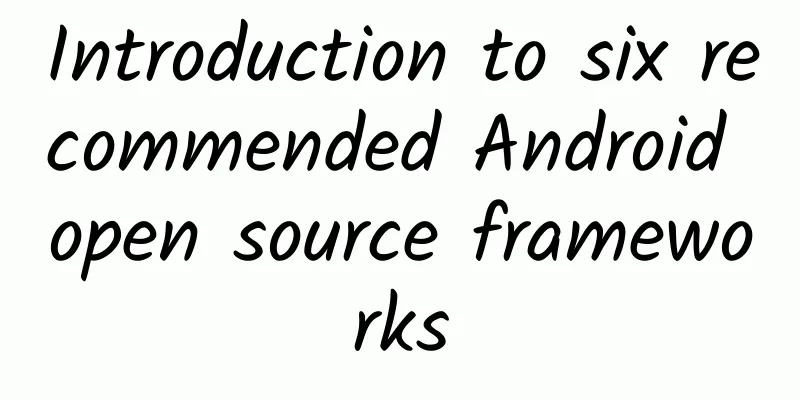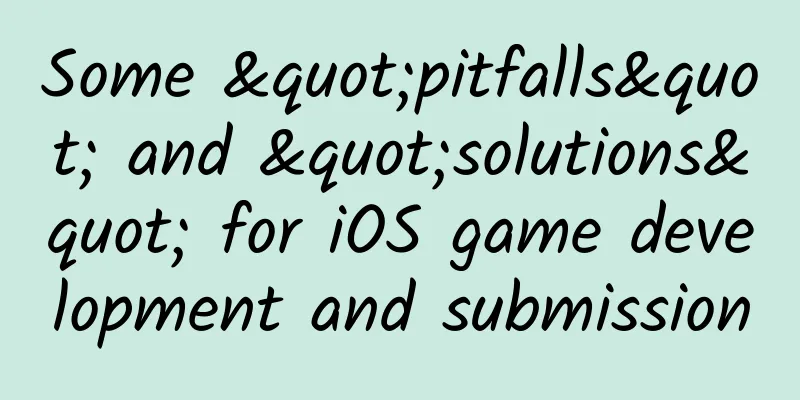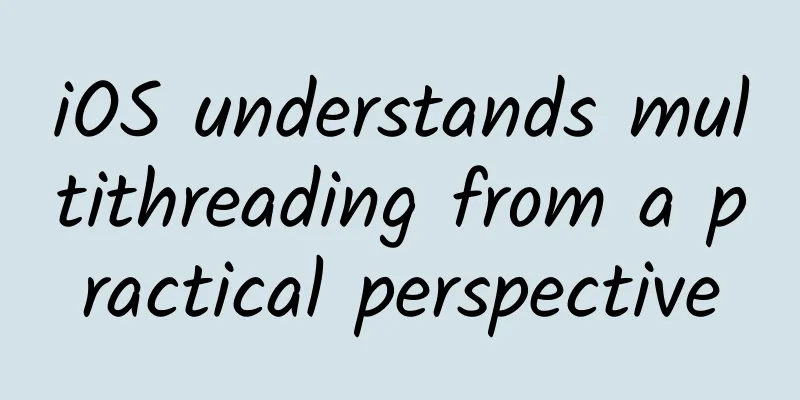Introduction to six recommended Android open source frameworks

|
1. Volley Project address: https://github.com/smanikandan14/Volley-demo Asynchronous downloading of JSON, images, etc.; 2. android-async-http Project address: https://github.com/loopj/android-async-http, Document introduction: http://loopj.com/android-async-http/ Process request results in anonymous callbacks Make http requests outside the UI thread Upload files at breakpoints Intelligent retry Default gzip compression Support parsing into Json format Cookies can be persisted to SharedPreferences 3. Afinal Framework Project address: https://github.com/yangfuhai/afinal There are four main modules: Database module: The orm framework in Android uses a thread pool to operate sqlite. FinalBitmap can configure the number of thread loading threads, cache size, cache path, loading display animation, etc. FinalBitmap's memory management uses the lru algorithm, and does not use weak references (Google no longer recommends using weak references after Android 2.3, and forcibly reclaims soft references and weak references after Android 2.3, for details, see the Android official document), to better manage bitmap memory. FinalBitmap can customize the downloader to expand other protocols to display network images, such as ftp, etc. At the same time, you can customize the bitmap display, Play animations when the imageview displays pictures (the default is gradient animation display). Project address: https://github.com/wyouflf/xUtils, there are four main modules: Database module: Annotation module: The ioc framework in Android can perform UI, resource and event binding completely through annotations; Network Module: Support synchronous and asynchronous requests; Image cache module: When loading a bitmap, you do not need to consider the OOM that occurs during the bitmap loading process and the image misalignment that occurs when the Android container slides quickly. 5. ThinkAndroid Project address: https://github.com/white-cat/ThinkAndroid The main modules are as follows: MVC module: realizes the separation of view and model. 6. LoonAndroid Project address: https://github.com/gdpancheng/LoonAndroid The main modules are as follows: Automatically inject the framework (just inherit the APP in the framework) Among them, Volley was studied in 2013. It has very good scalability and is my favorite style. Others such as Android-async-http and Afinal are also quite good. |
<<: Hundreds of iOS apps exposed to FREAK vulnerability risk
>>: .com is 30 years old, is he old?
Recommend
These magical stripes have ruined countless photos, but they can also be so beautiful!
This magical stripe has ruined countless photos, ...
If you have posted these five types of photos, please delete them immediately!
Recently, the topic **#Don't post 5 kinds of ...
Sharing of research methods on plain text reading experience on mobile terminals
According to a survey, in 2014, the book reading ...
Traditional home appliance manufacturers are focusing on Internet TV products. Konka redefines what a good TV is.
After the color TV industry gathered two major ca...
Introduction to 360 Search Golden Booth CPT Advertising Promotion!
360 Search Gold Booth Introduction to the advanta...
Tik Tok, Kuaishou or Bilibili? How do brands choose short videos?
Recently, Bilibili has become popular because of ...
Marvel movie Thor series 3 ultra-clear English and Chinese subtitles collection
Marvel Movie Collection Download Marvel Movie Col...
What is the significance and value of enterprise bidding hosting?
Nowadays, many companies do not have a profession...
How to increase App users by not filling in invitation codes
What should we do when fission marketing becomes ...
An undergraduate student took a part-time job during the holiday and overturned this famous mathematical conjecture
An undergraduate and a first-year graduate studen...
Virtual Reality Entrepreneurship: How long will it take to see spring?
Virtual Reality (VR), a field that is somewhat un...
When doing marketing on TikTok, what are the benefits of certifying a Blue V account?
Douyin Blue V is actually the official logo of Do...
How long will it take for humans to hibernate? Not far away!
For some species, when external conditions become...
Is the birthday greeting video of an African child real? How to send birthday wishes to African children?
Videos of African children holding up signs and R...
What is the purpose of the phone prompting system upgrade? Should I upgrade?
[[436573]] Some people think that mobile phones n...









